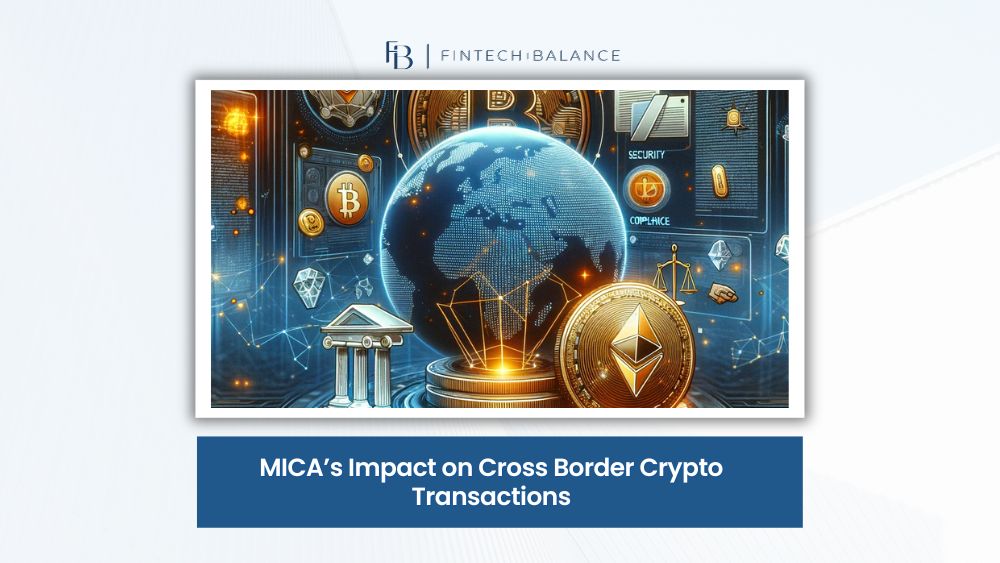Lithuania has emerged as one of Europe’s leading crypto-friendly jurisdictions. As the EU’s Markets in Crypto-Assets (MiCA) regulation approaches implementation in 2024, Lithuania is gearing up to align itself with the new pan-European crypto asset framework. This article analyzes MiCA’s broad impact on Lithuania’s cross-border cryptocurrency transactions and crypto regulations. For direct impact of mica on Lithuania you can explore Impact of Mica on Lithuania for better understanding of how it is going to change crypto currency regulations in future.
MiCA establishes the first comprehensive regulatory regime for cryptocurrencies and crypto-asset service providers across the EU. As a pioneer in Europe’s crypto landscape, Lithuania has taken steps to implement MiCA far in advance of the 2024 deadline. We examine how MiCA would influence cross-border crypto flows and transactions involving Lithuanian entities and the overall crypto regulatory environment.
Impact on Crypto Regulations in Lithuania
Classification of Crypto-Assets
A core component of MiCA is the classification of crypto-assets into categories such as asset-referenced tokens, e-money tokens, and utility tokens. Each category will be subject to specific regulations. For instance, stricter regulations apply to stablecoins. Lithuanian regulators like the Bank of Lithuania are already working on defining crypto-asset categorization per MiCA.
Regulations for Crypto Service Providers
MiCA mandates licensing and regulatory requirements for crypto service providers, including exchanges, wallet providers, investment advisors, etc., dealing with custody, trading, payments, and other activities. Lithuanian crypto companies must comply with organizational, governance, capital, and security rules. Many companies have already begun aligning operations with MiCA.
Anti-Money Laundering Rules
Mica brings crypto entities like exchanges and wallet providers under the EU’s anti-money laundering and counter-terrorism financing (AML/CTF) regime. It includes mandates related to customer due diligence, transaction monitoring, suspicious activity reporting, and maintaining AML records. Lithuania has already tightened AML/CTF rules for crypto entities effective 2022.
Marketing and Promotion Standards
MiCA introduces regulations around promoting and advertising crypto-assets, including requirements for clear disclosures in marketing materials and communications. Lithuanian crypto issuers and service providers would need to adhere to these standards.
Oversight by EU Financial Regulators
MiCA empowers the European Banking Authority (EBA) and European Securities and Markets Authority (ESMA) with direct oversight of the crypto sector. Lithuanian entities would fall under the ambit of these regulators.
Influence on Cross-Border Crypto Transactions
Travel Rule for Information Sharing
A major influence of MiCA on cross-border cryptocurrency transactions is the Travel Rule, which requires the sharing of customer data (names, account details, etc.) between the originator’s and beneficiary’s crypto service providers for asset transfers. It aims to improve transparency for monitoring illicit flows. As a Baltic and Northern European crypto hub, Lithuania must implement data sharing with entities across EU borders.
Cooperation Between National Regulators
MiCA establishes cooperation mechanisms between national regulators across the EU for exchanging information related to crypto-asset issuers, service providers, and suspicious transactions. It would enhance Lithuania’s ability to monitor cross-border crypto activities by leveraging other regulators’ inputs.
Passporting for Seamless EU Expansion
The licensing passport regime under MiCA will enable Lithuanian crypto companies to expand services across the EU seamlessly. It would facilitate cross-border transactions and operations. However, privacy concerns around the Travel Rule need resolution.
Outlook for Crypto in Lithuania
Proactive Alignment Ahead of MiCA Deadline
Lithuania has taken proactive steps, such as introducing crypto licensing and tightening AML rules, to align itself with MiCA well before the 2024 deadline. Further efforts are underway, including developing categorization norms for crypto-assets. This positions Lithuania strongly to continue driving crypto innovation and adoption under the new EU regulations.
Opportunities for Growth Despite Regulatory Compliance
While MiCA would increase compliance requirements, Lithuania sees it as a balanced regulation that provides much-needed clarity for crypto players to operate legitimately. Policymakers aim to implement MiCA without stifling innovation by supporting the growth of crypto startups and businesses.
Retaining Lithuania’s Crypto Hub Status
With its advanced technical infrastructure, crypto-progressive policies, and abundant blockchain talent, Lithuania aims to retain its status as an attractive EU destination for crypto companies. Prompt MiCA compliance and future-ready crypto regulations would help Lithuania maintain its edge as a premier European crypto hub.
Economic Considerations
- Potential for Growth: MiCA’s regulatory clarity and passporting provisions could attract new players to the Lithuanian crypto market, potentially boosting economic activity and job creation.
- Innovation and Competition: MiCA’s focus on consumer protection and AML/CFT compliance could encourage innovation in the Lithuanian crypto sector, developing more secure and regulated products and services.
- Impact on Traditional Finance: Increased crypto-asset adoption and regulation could challenge traditional financial institutions’ dominance in Lithuania. It could lead to new opportunities and partnerships between the crypto and traditional finance sectors.
Challenges and Opportunities
MiCA brings some challenges for Lithuania’s crypto businesses. Companies will need to make changes to follow the new rules on licensing, customer checks, marketing, and reporting suspicious transactions. It may increase costs for companies.
But MiCA also opens up opportunities. The same rules will apply across the EU. It makes it easier for Lithuanian crypto companies to offer services in other EU countries. With one license, they can operate in the whole EU.
The unified rules can give more confidence to investors. They know the rules are the same everywhere. It can help attract more investment to Lithuanian crypto companies. It can support Lithuania’s goal to be a fintech leader in Europe.
Overall, MiCA means more regulation. But it balances protecting consumers with allowing innovation. By following MiCA quickly, Lithuania can remain an attractive place for crypto companies. Lithuanian regulators want to work with the industry to implement MiCA smoothly. This will support the growth of crypto and blockchain technology.
Conclusion
As an early embrace of crypto, Lithuania has taken decisive steps to align itself with MiCA. Crypto players see MiCA as providing regulatory clarity, while authorities aim to balance compliance with continued support for innovation. By combining EU-wide standards with its crypto-conducive environment, Lithuania can thrive as a leading EU jurisdiction for crypto in the MiCA era.


